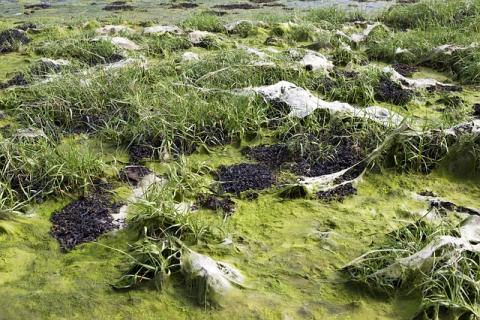
Maybe you’ve seen algae at a local pond, or returned home after a trip to find your pool teeming with green growth. Perhaps you’ve walked down the aisle of a health food store and seen the bottles and packages of spirulina, chlorella and other green powders, or heard that algae is coming to fuel your life–from your body, to your vehicle. Algae cultivation actually has its own name–algaculture–and while thousands of types of algae exist, the majority of algae being grown commercially is microalgae.
Here are five surprising ways algae may be used in the future:
1. Fuel
Since 1978, the Aquatic Species Program was launched under then-President Jimmy Carter in an effort to see if algae had the potential to be used as fuel. Millions have been put into this effort since Carter’s early initiative, but the future remains bleak–at least for now. Still, there’s motivation behind finding a way to utilize this potential energy source. For one, like all plants it converts carbon dioxide into oxygen as it grows, thereby possibly mitigating CO2 levels.
2. Food for Livestock
For another, it may prove to be a viable and healthy food source for livestock. Early conclusions suggest that it requires far less water than comparable food sources like corn, making it possible to grow feedstock in locations without an abundance of water.
3. Pollution Control
Climate change will be difficult, if not outright impossible, to stop because of continually rising carbon dioxide levels. That said, a hardy species of algae is being cultivated on a gas mixture with the same emissions as that of a power plant. A recent study found that this particular species of algae has the ability to neutralize nitric oxide which is otherwise harmful to the environment and air quality. Additionally, the algae also produces carbohydrates, which can be turned into bioethanol for fuel production.
4. Fertilizer
Algae can be a rich source of nitrogen for your backyard garden. Next time you need to fertilize your vegetables, consider using algae. Better still, scoop the green, slimy scum from your pond, drain excess water, and mix with green waste like vegetable peelings, fresh coffee grounds, and other compostable material. Then, let the compost do its work! This guide can be a helpful starter for those looking to get their hands dirty and their veggies healthy.
5. Beauty Products
Don’t be surprised if you find yourself wondering why your skin is looking youthful–you might be putting algae on your face. Algae has become popular in recent years as an anti-aging product, and many top level brands have begun incorporating specific strands into face creams and moisturizers. One stand-out product is Juice Beauty’s Nutrient Moisturizer, made with mineral-rich algae.
With an incredibly quick growth rate and potent nutrient and mineral qualities, expect algae to become a staple in the coming years–in more ways than one.








